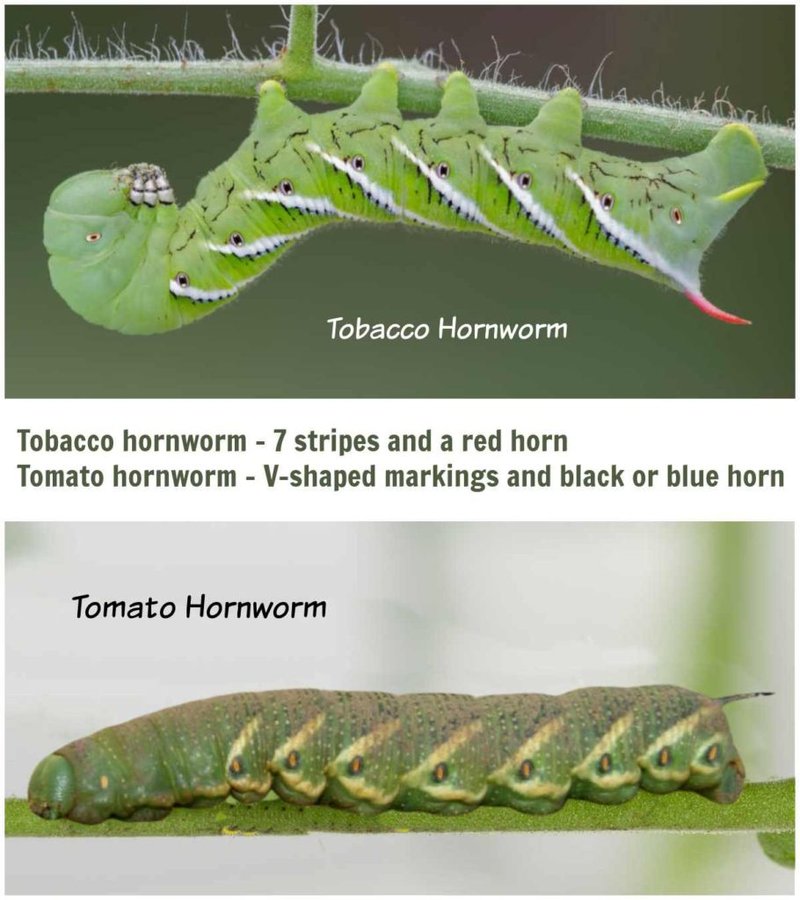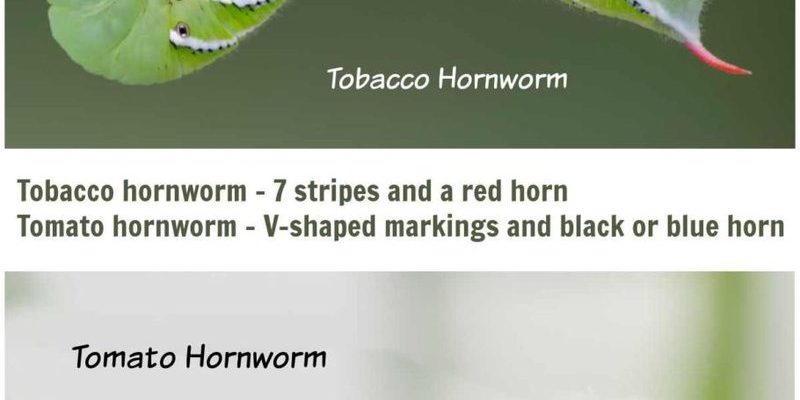
Both hornworms can be quite destructive, munching on leaves as if it’s their last meal. But just like how every city has its unique characters, these two hornworms have their own traits that set them apart. As we explore their differences, you’ll figure out which one you’re dealing with and how to manage them effectively.
What Are Hornworms?
Let’s start with the basics. Hornworms are caterpillars of moths that primarily feed on plants in the nightshade family, which includes tomatoes and tobacco. Think of them as the teenage pests who get into trouble at night when no one is watching.
These caterpillars have a distinctive appearance. They’re large, green, and have a horn-like protrusion on one end. This horn can make them look a little fierce, but they’re just trying to survive like the rest of us. Typically, they reach lengths of about 3–4 inches and can really do a number on your plants if left unchecked.
You’ll usually find them hanging out on the underside of leaves, which is just their way of staying stealthy. Knowing what they are and where to find them is the first step in managing these garden invaders.
Identifying Tobacco Hornworms
Now, let’s dive into the specifics of the tobacco hornworm. One of the most striking features is its color—vibrantly green with white diagonal stripes running down the sides. You may find it heavier and stockier than its tomato counterpart.
Tobacco hornworms are notorious for feasting on tobacco plants, but they also have a taste for tomatoes and peppers. If you see your tobacco plants taking a hit, it’s likely that these guys are the culprits.
Another clue in identifying them is their horn. The tobacco hornworm has a curved horn that resembles a little horn on its rear end. Don’t think of it as a weapon but more like a badge of honor in its caterpillar world. Understanding these traits will help you spot them before they wreak too much havoc.
Identifying Tomato Hornworms
On to the tomato hornworm! While similar in many ways, this guy brings its own flair. It’s also green but is known for having a more pronounced horn that’s often hooked—like a miniature fishing hook.
While both types are a menace to plants, the tomato hornworm prefers to munch on tomato plants, peppers, and eggplants. So, if your tomatoes are looking sad and you’ve spotted a chunky hornworm, you can guess which type is causing the trouble.
One unique trait of the tomato hornworm is the small white “scoops” that you might notice on its body. These are actually the cocoons of parasitoid wasps! The wasps lay their eggs inside the hornworms, which can be a nature lover’s silver lining. Even if you’re dealing with a pest, nature is busy trying to keep it in check in its own way.
Behavior and Life Cycle
Both hornworms share a similar life cycle that involves several stages: egg, larva (the hornworm stage), pupa, and adult. The females lay their eggs on the underside of leaves, typically during warm months. After a few days, the eggs hatch into hornworms.
As they grow, these caterpillars are in a hurry to eat. They can consume a lot of foliage, leading to big holes in leaves. If you’ve seen your plants looking chewed up, it’s likely thanks to their voracious appetite.
After about three weeks of munching, they’re ready to pupate. They’ll bury themselves in the soil and transform into moths, which will eventually emerge to lay more eggs. It’s a cycle that keeps on giving—unfortunately, a bit too generously for your garden!
Damage Caused
Both types of hornworms are garden pests, but their impact can vary slightly. The tobacco hornworm often prefers tobacco plants, leading to noticeable leaf loss and stem damage. If you’re an enthusiastic tobacco grower, this could be a serious problem.
On the flip side, the tomato hornworm is especially notorious for its rapid consumption of entire plants. Picture it like an all-you-can-eat buffet, and your tomato plants are the main course. An entire tomato plant can be stripped bare in just a couple of days, leaving behind a sad, leafless skeleton.
Recognizing the difference in behavior is key for managing these pests effectively. Knowing which one is munching away can help you decide on the best approach to protect your plants.
Control Methods
So, what can you do if you find these hornworms in your garden? First off, it’s essential to act quickly. Here are some effective control methods:
- Handpicking: If you can handle it, go out during the day and remove them by hand. It might sound gross, but it’s often the simplest way to keep their numbers down.
- Natural Predators: Encourage birds, ladybugs, and parasitoid wasps, which are natural enemies of hornworms. You can create a welcoming environment by planting a variety of flowers.
- Insecticidal Soap: If the infestation is severe, consider using insecticidal soap or neem oil. These are less harmful to beneficial insects and can help control the population without doing too much damage to your garden.
Each method has its pros and cons, but combining them often yields the best results.
Now that you know the difference between tobacco hornworms and tomato hornworms, you’re better equipped to tackle any pest challenges in your garden. Remember, while they might seem like the villains of the story, they play a role in the ecosystem, too.
Your best bet is to keep a close eye on your plants, spot them early, and take action before they get out of hand. Protecting your garden is not just about removing pests; it’s about finding a balance that allows nature to thrive alongside your beautiful plants. So grab your gloves, get out there, and enjoy your gardening adventure!

